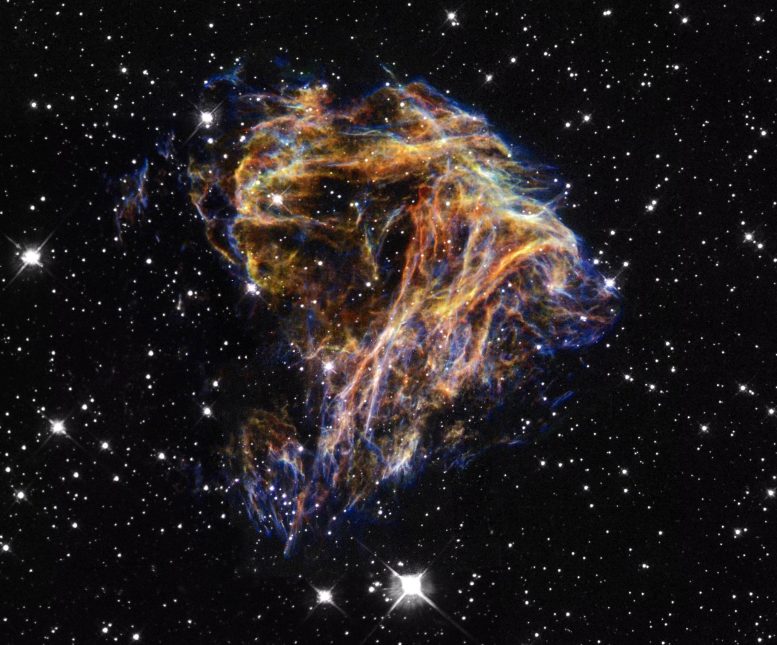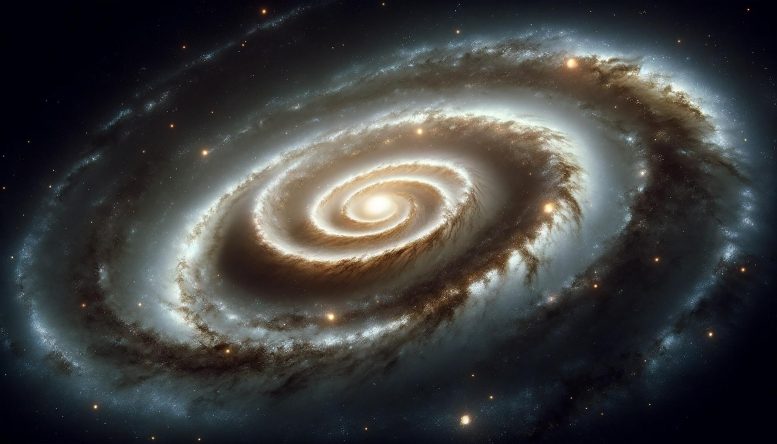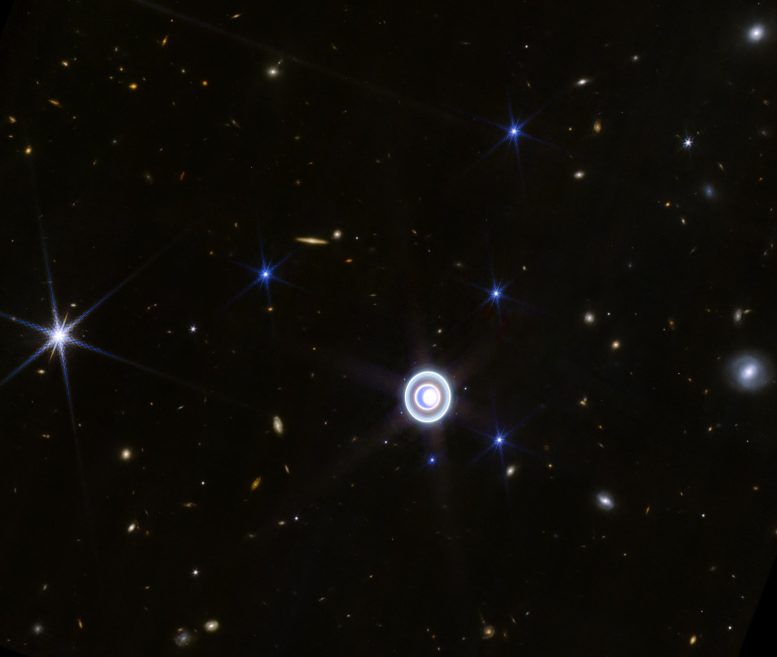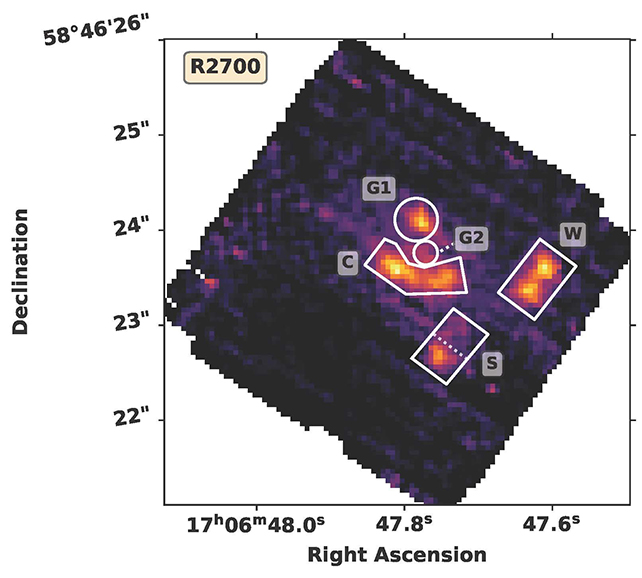Cosmic Fireworks: Hubble’s Stunning View of a Stellar Explosion in the Large Magellanic Cloud
Updated: 2023-12-31 19:23:21
 The Hubble Space Telescope captured this spectacular image of a stellar explosion throwing out sheets of debris in the nearby Large Magellanic Cloud galaxy on...
The Hubble Space Telescope captured this spectacular image of a stellar explosion throwing out sheets of debris in the nearby Large Magellanic Cloud galaxy on...
 Research on an ancient spiral galaxy reveals crucial insights into early galaxy formation, highlighting rapid star formation and unique structural features compared to contemporary galaxies....
Research on an ancient spiral galaxy reveals crucial insights into early galaxy formation, highlighting rapid star formation and unique structural features compared to contemporary galaxies.... On December 18, 2023, the James Webb Space Telescope captured remarkable images of Uranus, revealing the planet’s intricate ring system and seasonal north polar cap,...
On December 18, 2023, the James Webb Space Telescope captured remarkable images of Uranus, revealing the planet’s intricate ring system and seasonal north polar cap,... A newly discovered iguana species adds to Asia’s diverse reptile population, having been formally recognized in the scientific community through its description in the open-access...
A newly discovered iguana species adds to Asia’s diverse reptile population, having been formally recognized in the scientific community through its description in the open-access... Stark contrasts between light and dark indicate the interface between urban and natural areas in the Greek capital. An astronaut aboard the International Space Station...
Stark contrasts between light and dark indicate the interface between urban and natural areas in the Greek capital. An astronaut aboard the International Space Station... A team of astronomers has used asteroseismology, or the study of stellar oscillations, to accurately measure the distance of stars from the Earth. Their research...
A team of astronomers has used asteroseismology, or the study of stellar oscillations, to accurately measure the distance of stars from the Earth. Their research... This galaxy is not a galaxy at all.
This galaxy is not a galaxy at all.